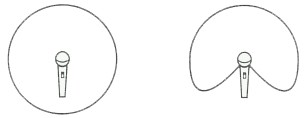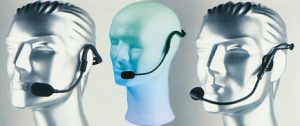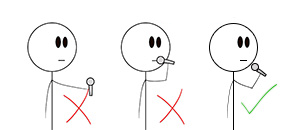Introduction
Sound Services supply microphones and wireless mics to suit all public address, PA sound system, recording and conference requirements. We have products by QTX, Citronic, IMG Stageline, Adastra, Clever Acoustics, W Audio, Monacor and many more – these manufacturers cover all requirements from mobile to fixed installation, from budget to broadcast and from personal clothing clip, hand-held, headworn and stand to conference pick-up types
Microphones can also be cabled or wireless depending on the requirements of the venue, the event and the user
Whether on stage, in the studio, place of worship or a conference, choosing the correct microphone for the job will be the difference between being heard and being heard clearly
There are many different types of microphone available, which can be quite confusing initially. Many are designed to suit a particular type of recording or sound reinforcement situation and it is important to select the best type of microphone for the task at hand
Frequency Response
A microphone’s frequency response is measured in Hertz and refers to the range of frequencies, from lowest to highest, that a microphone will pick up. A microphone with a frequency response range of around 80Hz – 15kHz would make a good choice for a vocal or speech mic
Alternatively drums, for example, would be more suited to a lower frequency starting around 50Hz and cymbals with a high frequency reaching up to 20kHz
Sensitivity
Sensitivity refers to how quiet a sound the microphone can detect. The lower the number, the more sensitive the microphone is
Polar Response
Polar Response or the way in which a microphone picks up sound can also vary, and careful selection is needed to ensure the correct type is chosen to suit the use intended. There are two common types of pickup response – omni-directional and uni-directional
Microphone pick-up patterns

Omni-directional Uni-directional
Omni-directional
Omni-directional microphones will pick up sound from all directions equally. They might be used anywhere that sound needs to be heard from all around, such as a meeting or conference table. Unwanted sounds may also be picked up
Uni-directional
Uni-directional or cardioid microphones pick up sound primarily from one direction only, usually the front. Sound from unwanted directions will be attenuated rejected to a large extent
The latter is by far the most popular type and in this category, the cardioid polar response is common. The heart-shaped appearance of the pick-up pattern is useful for its capability to reject rearward sounds by around 70%. This helps to reduce acoustic feedback or howl, and can equally help to reduce audience noises, background music, etc.
Dynamic Microphones

A dynamic microphone is so-called because it operates like an electrical dynamo, where the vibrations are received onto a diaphragm which has a coil attached to it, which is in close proximity with a powerful magnet
Moving-coil or dynamic microphones are probably the most common. Here a coil is attached to a small diaphragm which is made to move in sympathy with sound waves directed to it. The coil is suspended in a magnetic field. The resultant motion produces an electrical output in similar principle to that of a dynamo, generator or alternator. The output voltage is, however, very tiny – in the region of a few thousandths of a volt
The coil normally has a low resistance and is referred to as a low impedance microphone. Electrically, it will usually be balanced about earth and use two-core screened cable, relatively long (> 100m) balanced line, low impedance cable runs may be used without greatly reducing sound quality or picking up interference. Unbalanced and high impedance types are also available which can only be used on shorter cable runs (<10m). These unbalanced high impedance microphones suffer from electrical interference and are not recommended for professional use
In general dynamic mics are more rugged than condensers, making them more suitable for on-stage use. They can handle high sound pressure levels for example powerful vocals or snare drum hits and they usually have a built in shock mount to reduce handling noise
Their polar patterns are designed to pick up sound close to and in front of the mic whilst not picking up sound from further a field, for example sounds from other vocals or instruments nearby. This design also reduces the tendency to feedback (howl or high pitched whistle)
Pros: Simple, robust design – No power supply required – Relatively low cost
Cons: Lower sensitivity – Limited frequency response – Variable tone colouration
Condenser Microphones

A condenser microphone is so-called because it uses a capacitor, otherwise known as a condenser, to transform sound into an audio signal. The capacitor is a pair of fine electrical plates, separated by an insulating layer with a charge applied to one of the plates
Capacitor or condenser microphones generally provide superb quality audio and can be used over long cable runs. They require some form of power supply, either from internal batteries (an inconvenience) or from the amplifier/mixer itself via Phantom Power. Often called Electret microphones these can be very small so are ideal for clothing-clip, boundary, headworn and other types of miniature microphone
As sound waves hit the condenser capsule, the plates vibrate and the distance between them is very slightly varied, allowing charge to leak over from one plate to the other, providing an electrical replica of the sound vibrations, which is then boosted by an internal preamp before being delivered as an audio output
Condensers are more sensitive and more suited to studio work. Some however, are designed for live vocal and instrument pick up work or as overheads for choirs, pianos, drums etc.
Condensers will pick up the subtleties from vocal and instrumental performance that can sometimes be missed by a dynamic mic. Proximity effect is more pronounced in condenser microphones; it increases the response of bass frequencies as you get closer to the mic and is a benefit used by singers and engineers to colour their sound
These microphones require a power source, either from a battery or phantom power supplied from the desk or preamp. Ensure you have a phantom power source if considering a condenser microphone without its own battery power
Pros: High sensitivity – Wide frequency response – Minimal sound colouration
Cons: Requires power supply (phantom, battery or USB) – Prone to damage by impact – Can be relatively high cost
Ribbon Microphones
Ribbon microphones are seldom except in studios. They are invariably balanced low impedance types but tend to be somewhat delicate and suffer if mishandled or ill treated mechanically. For this reason, they are not recommended for PA work
How to Wear a Headworn Microphone

It is important to position a headworn microphone in the correct way – usually the headband goes around the back of your head and the microphone boom arm is on the left of your face
Correct Microphone Handling
Remember – you must still project your voice when using any sort of microphone amplification system
and ALWAYS use the microphone from a position behind the loudspeakers
How to avoid Acoustic Feedback
Acoustic feedback (howl) is caused by a number of factors such as microphones being too close to loudspeakers, too much volume or bass, unmatched equipment or equipment not suited to the use or venue
- To avoid acoustic feedback (howl) in PA sound systems microphones should not be used in front of or otherwise near to any loudspeakers. For live sound it is important to hold your mic correctly
- Always ensure that the person wearing/using the microphone or wireless mic does not go within 3m to 4m of the loudspeaker(s)
- Body worn (lapel) microphones should be central on the body and around 20cm below the mouth. Feedback is much more likely with this sort of microphone – it can only be used to reinforce the voice
- Headworn microphones should always be protected by a foam windshield and be worn as near to the mouth as possible
- Hand held microphones sound ‘warmer’ and exhibit less feedback if they are used closer to the mouth
- Remember – you must still project your voice when using any sort of microphone system
- Feedback is primarily caused by proximity of microphone(s) to loudspeaker(s), incorrect placement of loudspeakers, too much volume and/or incorrect tonal settings on the amplifier – turn the bass and volume down and use the low cut filter!
- The microphone(s) must always be behind the loudspeakers
- Use a specialist feedback controller with your sound system
- Internal fuses will blow and the amplifier will be damaged if you use faulty speaker leads or speakers. Always look after your interconnect cables – they are easily damaged – especially in a portable or mobile sound system. The leads and any damage directly caused by using faulty leads is not covered by the Sound Services or manufacturers warranty. Immediately stop using the system if you suspect that you have damaged the speaker leads or speakers in any way
E&OE


 Shipping from the EU & Third Party Depots
Shipping from the EU & Third Party Depots